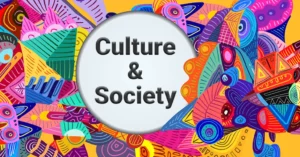AI Answer Evaluation Platform Live Now. Try Free Answer Evaluation Now
Protein Synthesis
In the grand theatre of life, protein synthesis is the play unfolding behind the scenes. This biochemical process orchestrates the formation of proteins, the functional molecules responsible for nearly every action within cells, tissues, and organisms. The precise choreography involved in protein synthesis is arguably one of nature’s most remarkable spectacles. It consists of intricate stages – transcription, RNA processing, and translation – which occur in a sequence that is as complex as it is elegant.

Proteins, often referred to as the workhorses of the cell, undertake a myriad of essential functions. They act as enzymes, catalyzing metabolic reactions, operate as structural elements, providing shape and stability to cells, and serve as transporters, ferrying molecules across cell membranes (Alberts, Johnson, Lewis, Raff, Roberts, & Walter, 2002).
The process of protein synthesis involves two major steps: transcription and translation. Transcription occurs in the nucleus of the cell, where the genetic information stored in the DNA is transferred to a molecule of messenger RNA (mRNA). Translation takes place in the cytoplasm, where ribosomes read the mRNA sequence and construct the corresponding protein.
The Stages of Protein Synthesis
1. Transcription
The journey of protein synthesis begins in the cell nucleus with transcription. Here, the DNA’s information blueprint is converted into an mRNA sequence. This is achieved by RNA polymerase, an enzyme that separates the DNA strands and synthesizes the complementary mRNA strand.
Initiation
Transcription initiates when RNA polymerase binds to a promoter region on the DNA sequence. The promoter region signals the beginning of a gene and sets the direction for transcription (Lodish, Berk, Zipursky, Matsudaira, Baltimore, & Darnell, 2000).
Elongation
During the elongation phase, the RNA polymerase moves along the DNA template strand, synthesizing the mRNA in a 5′ to 3′ direction. This RNA strand is antiparallel and complementary to the DNA template.
Termination
Transcription concludes when a termination signal is reached on the DNA sequence. This signal prompts the RNA polymerase to dissociate from the DNA, releasing the newly formed mRNA strand.
2. RNA Processing
Before the mRNA can be used as a template for protein synthesis, it must undergo several processing steps.
5′ Capping
The mRNA molecule is first chemically modified at its 5′ end by the addition of a cap. This cap is crucial for the mRNA’s stability and its ability to bind to the ribosome (Moss, 2000).
Splicing
In eukaryotes, genes are composed of alternating regions called exons and introns. Exons contain the code for protein synthesis, while introns are non-coding regions. During splicing, these introns are removed and the exons are joined together to form a continuous coding sequence.
Polyadenylation
In the final stage of RNA processing, a poly(A) tail is added to the 3′ end of the mRNA. This tail enhances mRNA stability and promotes its export from the nucleus (Moss, 2000).
3. Translation
Translation, the last step of protein synthesis, converts the mRNA sequence into a polypeptide chain, the building block of proteins. This process takes place in the cytoplasm and involves the ribosome, transfer RNA (tRNA), and various protein factors.
Initiation
Translation begins with the binding of the mRNA to the ribosome. A tRNA molecule carrying the corresponding amino acid recognizes and binds to the start codon on the mRNA.
Elongation
The ribosome then moves along the mRNA sequence, reading the codons (triplets of nucleotides), and tRNA molecules bring the appropriate amino acids. These amino acids are joined together to form a polypeptide chain.
Termination
Translation concludes when a stop codon is reached on the mRNA sequence. A release factor binds to this stop codon, triggering the disassembly of the ribosome and the release of the polypeptide.
The Genetic Code
The genetic code serves as a translation table, allowing the mRNA sequence to be converted into an amino acid sequence. This code is made up of nucleotide triplets, known as codons. Each codon corresponds to a specific amino acid or a signal to start or stop translation (Crick, 1968).
Table 1: An example of the codons in the genetic code and their corresponding amino acids. Please refer to a complete genetic code table for further information.
| Codon | Amino Acid |
|---|---|
| AUG | Met (start) |
| UAA, UAG, UGA | Stop |
| GCU, GCC, GCA, GCG | Ala |
Conclusion
In summary, protein synthesis is a meticulous and elaborate process, integral to the formation and function of life as we know it. It allows the genetic information coded in our DNA to be translated into the proteins that form the basis of cellular structure and function. Despite its complexity, protein synthesis maintains a level of precision and efficiency that continues to astound scientists to this day. As our understanding of this fundamental process deepens, so too does our ability to manipulate it for biomedical and biotechnological applications.
References
- Alberts, B., Johnson, A., Lewis, J., Raff, M., Roberts, K., & Walter, P. (2002). Molecular Biology of the Cell (4th ed.). New York: Garland Science.
- Crick, F. (1968). The origin of the genetic code. Journal of Molecular Biology, 38(3), 367-379. https://doi.org/10.1016/0022-2836(68)90392-6.
- Lodish, H., Berk, A., Zipursky, S. L., Matsudaira, P., Baltimore, D., & Darnell, J. (2000). Molecular Cell Biology (4th ed.). New York: W. H. Freeman.
- Moss, T. (2000). At the crossroads of growth control; making ribosomal RNA. Current Opinion in Genetics & Development, 10(5), 544-553.



